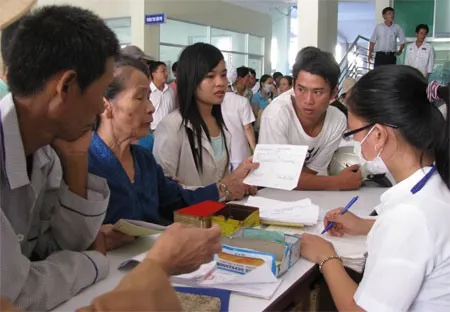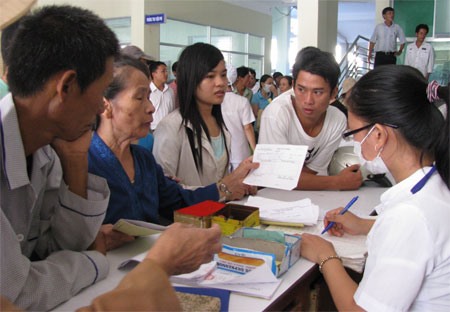Medical claims on the rise, says VSI


|
| The number of patients using the public medical insurance increased by 12 per cent while medical fee reclaim was up 19.2 per cent in the first quarter compared to the same period last year. |
HÀ NỘI — The number of in-patients with public medical insurance has unusually increased in the first four months, according to the latest report by the Việt Nam Social Insurance (VSI).
Healthcare units have submitted 49.9 million documents for reclaiming medical insurance fees totaling VNĐ26.1 trillion (US$1.1 million).
Đàm Hiếu Trung, vice director of VSI’s medical assessment and fee reclaim centre for the northern region, told the Kinh Tế & Đô Thị (Economy and Urban Affairs) newspaper that “for the first months this year, the fund of medical insurance had paid 359 patients whose medical fees were more than VNĐ300 million (US$13,100) each, and 1,121 patients paying medical fees ranging from VNĐ200 million to 300 million each”.
“The medical insurance paid VNĐ1.4 billion (US$61,500) - the highest rate so far - for one patient who was treated hepatitis in Bạch Mai Hospital”, said Trung.
The number of patients using the public medical insurance has increased by 12 per cent while medical fee reclaim was up 19.2 per cent compared to the same period last year, said the deputy director.
Notably, the rate of in-patients nationwide had risen 8.6 per cent.
But the number of in-patients in district-level general hospitals had unusually increased to 40 per cent.
For example, in the northern mountainous province of Hà Giang, the rate in the general hospital in Xín Mần District was more than 54 per cent, in the hospital of Đồng Văn District - 53 per cent, and in Nà Chì District – 49 per cent while in the hospital of Sốp Cộp District of Sơn La Province was 52 per cent.
Deputy chair of VSI’s medical insurance policy, Vũ Xuân Bằng, believes the increase of in-patients was one of the reasons cost rose for the VSI.
It reported the fees for hospital beds in the first quarter rose, accounting for a large proportion in the total expenditure, some VNĐ3.7 trillion (US$162 million), increasing 25 per cent against the same period last year.
In some provinces, the fees increased by 46 per cent, which Bằng believes were due to a number of factors.
Bed fees were formed based on equipment installed in patient rooms, such as air-conditioners, dehumidification machines, and ventilation fans.
However, not all hospitals met the requirements, said Bằng.
Recent surveys conducted in provinces of Bắc Ninh, An Giang and Hà Giang showed only 13 out of 52 patient rooms were equipped with air-conditioners, 11 rooms had dehumidification machines, and four rooms had ventilation fans.
Although the hospitals did not provide the equipment, they still calculated this into the bed fees.
In many healthcare units, the bed fees accounted for 60 per cent of total treatment fees.
Under current regulation, the calculation of bed fees is based on numbers of health workers.
A patient must be cared by one doctor and 3-3.5 nurses. It means a ratio of 1.34 health worker per bed. But in fact, the ratio was only 0.7, even 0.5 or less in some hospitals.
To solve the shortcomings, the Ministry of Health planned to adjust patient bed fees.
The bed fees would be reduced in second-class hospitals and increased in first-class and special hospitals, the ministry said. — LV
Tags:





